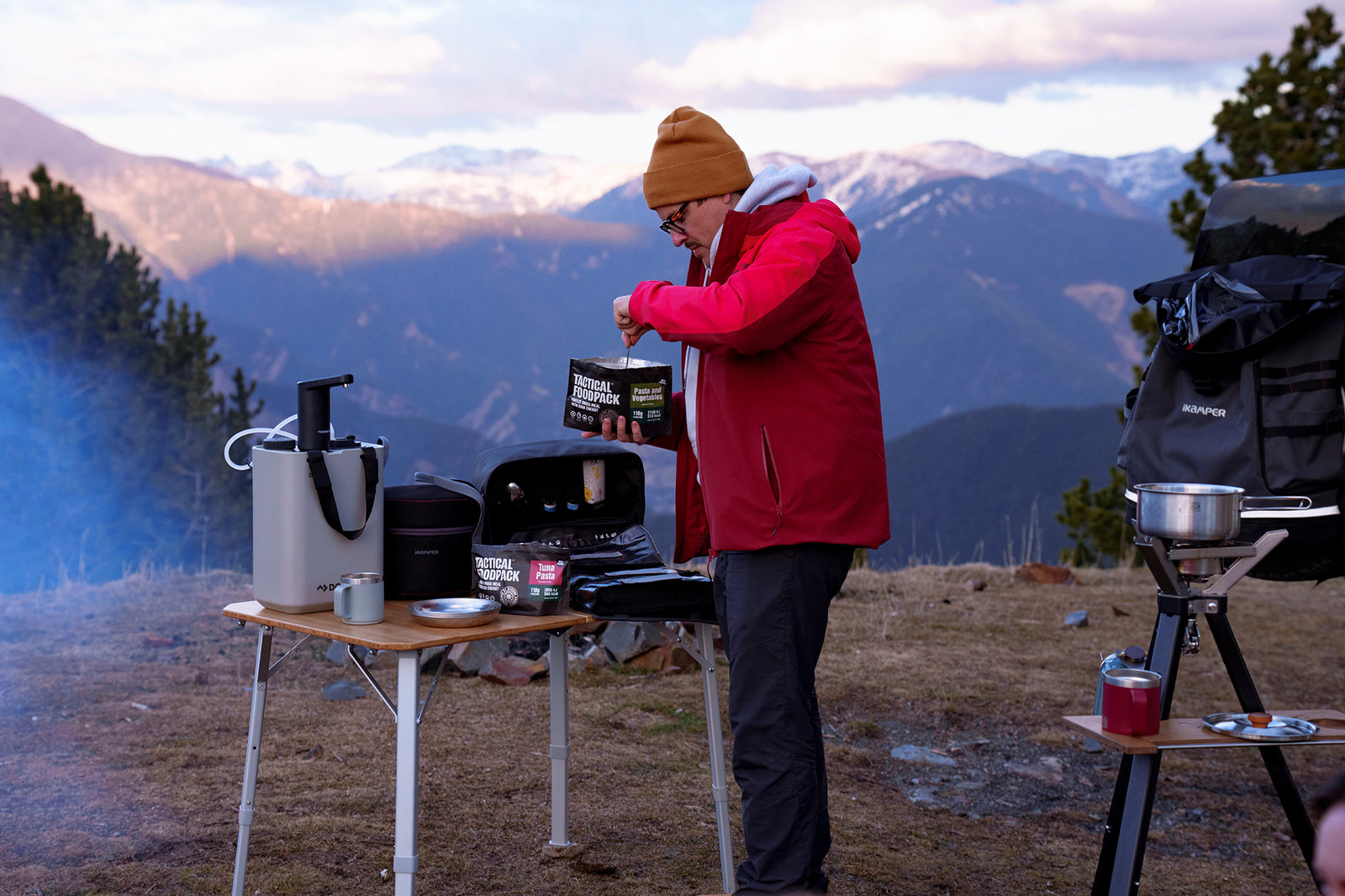Shop
Roof tents
Roof tent accessories
Bivouac and camping equipment
Roof tents
Roof tent accessories
Bivouac and camping equipment

FOOD MANAGEMENT IN CAMPING AND OUTDOOR AREAS
November 17, 2023
HOW TO MANAGE FOOD IN A BIVOUAC?
Wilderness camping offers a unique outdoor experience, but food management can be challenging. To ensure you and your team stay well-fed and healthy during your adventures, proper bivouac food planning and management is essential. This detailed guide will give you insight into best practices for to plan , prepare , keep , cook And dispose of your food safely .
PLANNING AND PREPARING MEALS IN BIVOUAC
CHOOSE SUITABLE FOODS
The first step in bivouac food management is selecting the right foods. Here are some key considerations:
NON-PERISHABLE AND SHELF-LONG FOODS
Choose foods that won't spoil quickly. Canned goods, dehydrated foods, pasta, rice, legumes, and nuts are all excellent choices. Avoid foods that require constant refrigeration. Avendoor , we offer quality freeze-dried products from the brand Tactical Foodpack . Light , compact And optimal in nutritional intake , it will be a more than important product during your next bivouacs or road trips.
You will find 4 delicious flavors to accompany you on your adventures:
- Apple Oats
- Crunchy Strawberry Muesli
- Muesly Crunchy Chocolate
- Shakshuka

PREPARING DEHYDRATED MEALS
Dehydrated meals are lightweight, compact, and easy to prepare in the field. You can buy them commercially or make them yourself. Simply add hot water to rehydrate them. You can find more information in our previous blog: " Freeze-dried meals, what are they? "
CALCULATE RATIONS AND QUANTITIES
Plan your rations based on the length of your trip. Make sure to include balanced meals that cover protein, carbohydrate, fat, and micronutrient needs. Also consider snacks for quick refueling.
PACKAGING AND WRAPPING: REDUCING VOLUME AND WASTE
Pack food in lightweight, compact containers. Reduce unnecessary packaging to minimize waste. Resealable bags, vacuum-sealed bags, and reusable containers are excellent options for storing your food.
FOOD PRESERVATION IN THE WILD
STORE YOUR FOOD
The best way to store your food is to use a powerful, self-contained portable electric cooler. Coolers Dometic like the CCF35 And CCF45 Or Ecoflow are excellent products to help you keep all your food fresh.

EXPLOITING FRESH WATERCOURSES
Camp near a fresh stream and use it to keep your food fresh. Submerge the dry bags in fresh water or dig a hole to bury your supplies. Be sure to seal the bags tightly to avoid contact with water.
COOKING AND PREPARATION IN THE FIELD
CHOOSING A CAMPING STOVE
A camping stove is an essential tool for preparing hot meals. You can opt for a portable gas stove or a wood-burning stove, depending on your preference. Make sure the stove is suitable for your destination and complies with current regulations. Since we don't do things by halves, we offer the cooking system nomadic and versatile, ideal for your adventures : the Disco Series . If you want to know this product inside and out, we invite you to read our previous blog: “ Disco Series, your kitchen ally ”. 
GAS STOVE VS WOOD STOVE
Gas stoves are quick and convenient, but require carrying gas canisters. Wood stoves use locally sourced materials for fuel, but require more time to prepare. Choose the one that best suits your itinerary.
You will also find all the information you need to make your choice in our blog: “ Portable stoves for cooking in the great outdoors ”.
PRECAUTIONS AND SAFETY WHEN COOKING
Safety is paramount when cooking outdoors. Place the stove on a stable surface, away from any flammable materials. Keep a fire extinguisher or fire-extinguishing device handy and follow the manufacturer's instructions.
SIMPLE AND NUTRITIOUS RECIPES FOR CAMPING
Prepare simple, balanced, and delicious meals. Pasta, rice, packet soups, and one-pot meals are all convenient options. Add dehydrated vegetables, spices, and herbs for extra flavor. Check out our previous blog: " Cooking While Camping: Recipe Ideas ."

FOOD WASTE MANAGEMENT
LEAVE NO TRACE PRINCIPLES
Respect nature by packing away all your food waste. Use leak-proof garbage bags to collect your waste and take it back with you. Do not burn food waste, as this can attract animals and damage the ecosystem.
By following these tips, you can effectively manage your bivouac food, keep your food fresh, minimize waste, and cook delicious meals in the great outdoors. Proper food management will help make your bivouac adventures more enjoyable and memorable.
